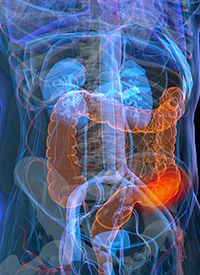The combination of ociperlimab (BGB-A1217), tislelizumab (BGB-A317), and chemotherapy elicited responses in patients with stage IV gastric or gastroesophageal junction (GEJ) cancer, irrespective of PD-L1 expression, according to data from the dose-expansion portion of the ongoing phase 1/1b AdvanTIG-105 trial (NCT04047862).
1
Data from cohort 9, which were presented during the 2023 ASCO Breakthrough Meeting, showed that in all patients (n = 59), the overall response rate (ORR) achieved with the regimen was 57.6% (95% CI, 44.1%-70.4%), and this was comprised entirely of partial responses (PRs); the stable disease (SD) rate was 28.8%, the progressive disease (PD) rate was 10.2%, and 3.4% of patients did not have this information available.
In the subset of patients with a PD-L1 expression of 5% or higher (n = 27), the ORR achieved with the combination was highest, at 63% (95% CI, 42.4%-80.6%), with all responders having a PR. In this group, the SD and PD rates were 22.2% and 14.8%, respectively.
In those with a PD-L1 expression of less than 5% (n = 28), the ORR was 57.1% (95% CI, 37.2%-75.5%), which again, was comprised entirely of PRs. In this subset, the SD rate was 28.6% and the PD rate was 7.1%; 7.1% of patients did not have this information available.
“The ORR was similar for all patients, regardless of PD-L1 expression, [and] the median DOR was longer for PD-L1–positive patients,” Byoung Yong Shim, MD, PhD, of The Catholic University of Korea, St. Vincent’s Hospital, Suwon, Republic of Korea, said in a presentation of the data. “The combination was generally well tolerated with an acceptable safety profile.”
Although PD-1/PD-L1 inhibition has improved outcomes for this patient population overall, some patients will not respond to treatment and/or they will relapse. Data from the dose-escalation portion of AdvanTIG-105 showed that the addition of the TIGIT inhibitor ociperlimab to the PD-1 monoclonal antibody tislelizumab and chemotherapy resulted in antitumor activity in those with advanced solid tumors with favorable tolerability.
Patients with histologically or cytologically confirmed stage IV HER2-negative gastric or GEJ cancer were enrolled to cohort 9 of the trial. They needed to have measurable disease by RECIST v1.1 criteria and an ECOG performance status of 0 or 1. Patients could not have previously received treatment for metastatic disease.
Patients received the recommended phase 2 dose (RP2D) of ociperlimab at 900 mg every 3 weeks plus tislelizumab at 200 mg every 3 weeks and chemotherapy in the form of oxaliplatin at 130 mg/m
2
plus capecitabine at 1000 mg/m
2
on days 1 to 14 every 3 weeks for 6 cycles, followed by maintenance treatment with the RP2D of ociperlimab and tislelizumab plus capecitabine every 3 weeks or the RP2D of ociperlimab and tislelizumab with cisplatin at 75 mg/m
2
on day 1 plus 5-fluororacil at 750 mg/m
2
to 800 mg/m
2
on days 1 to 5 every 3 weeks for 6 cycles.
Treatment continued until PD, unacceptable toxicity, or withdrawn consent.
ORR by investigator assessment and RECIST v1.1 criteria served as the trial’s primary end point. Key secondary end points comprised investigator-assessed progression-free survival (PFS), duration of response (DOR), and disease control rate (DCR) by RECIST v1.1 criteria, as well as safety. Overall survival served as an exploratory end point.
At the data cutoff date of February 2, 2023, 59 patients comprised the efficacy-evaluable population and 60 patients comprised the safety analysis set. The median follow-up time on the study was 44.2 weeks (range, 1.4-79.6). The median age of patients was 61.5 years (range, 35-82) and 26.7% were female.
Additional data in all patients showed that the DCR with the combination was 86.4% (95% CI, 75.0%-94.0%) and the median DOR was 8.1 months (95% CI, 4.7-10.0). In the subset of patients with a PD-L1 expression of 5% or higher, the DCR was 85.2% (95% CI, 66.3%-95.8%) and the median DOR was 8.4 months (95% CI, 7.0-not evaluable). In the group of patients with a PD-L1 expression of less than 5%, the DCR was 85.7% (95% CI, 67.3%-96.0%) and the median DOR was the shortest, at 4.7 months (95% CI, 3.2-10.0).
The median PFS in all patients was 7.3 months (95% CI, 5.2-9.8), and the 6-month PFS rate was 57.0% (95% CI, 42.9%-68.8%).
Regarding safety, all patients (n = 60) experienced at least 1 treatment-emergent adverse effect (TEAE), with 76.7% of events grade 3 or higher. Serious TEAEs were experienced by half of patients. The most common TEAEs occurring in at least 30% of patients included anemia (46.7%), decreased platelet count (41.7%), nausea (38.3%), decreased neutrophil count (33.3%), peripheral sensory neuropathy (31.7%), and decreased white blood count (31.7%).
TEAEs led to discontinuation of ociperlimab in 8.3% of patients and of tislelizumab in 8.3% of patients. TEAEs resulted in death for 2 patients, with 1 patient having neutropenia sepsis related to chemotherapy and the other having non–treatment-related pulmonary embolism.
Immune-mediated toxicities were experienced by 40% of patients, and the most common events were hypothyroidism (18.3%), rash (15.0%), maculopapular rash (6.7%), adrenal insufficiency (5.0%), and immune-mediated hepatitis (5.0%).
“The dose-expansion part of the study in non–small cell lung cancer, small cell lung cancer, esophageal cancer, and head and neck squamous cell carcinoma patients is currently ongoing,” Shim concluded.
Editor’s Note: Dr Shim disclosed serving in a consulting or advisory role for AstraZeneca, Bion, GuardantHealth, J Ints Bio, Pfizer, and Takeda. He also shared that research funding was received from Yuhan.
Reference
Kim SH, Lee G-W, Shim BY, et al. AdvanTIG-105: a phase 1b dose-expansion study of ociperlimab (OCI) + tislelizumab (TIS) with chemotherapy (chemo) in patients (pts) with stage IV gastric/gastroesophageal adenocarcinoma (GC/GEJC).
J Clin Oncol
. 2023;41(suppl 16):4028. doi:10.1200/JCO.2023.41.16_suppl.4028









